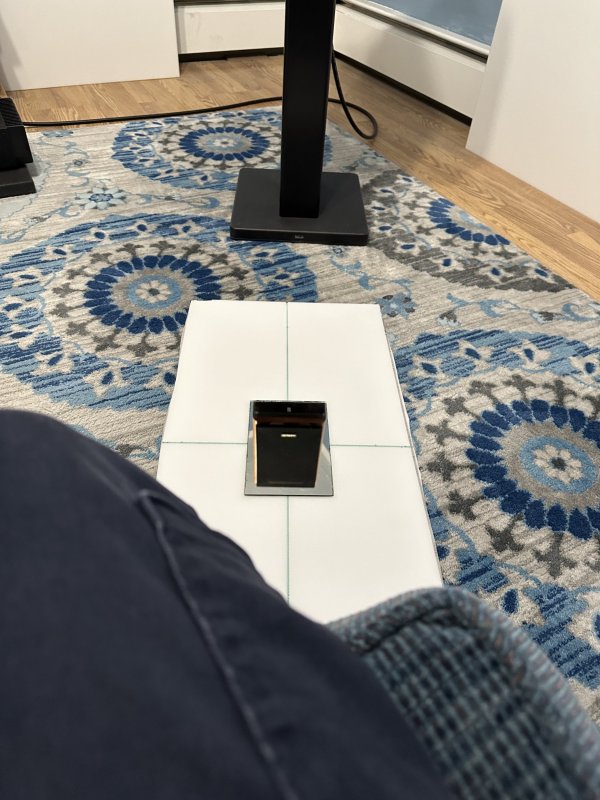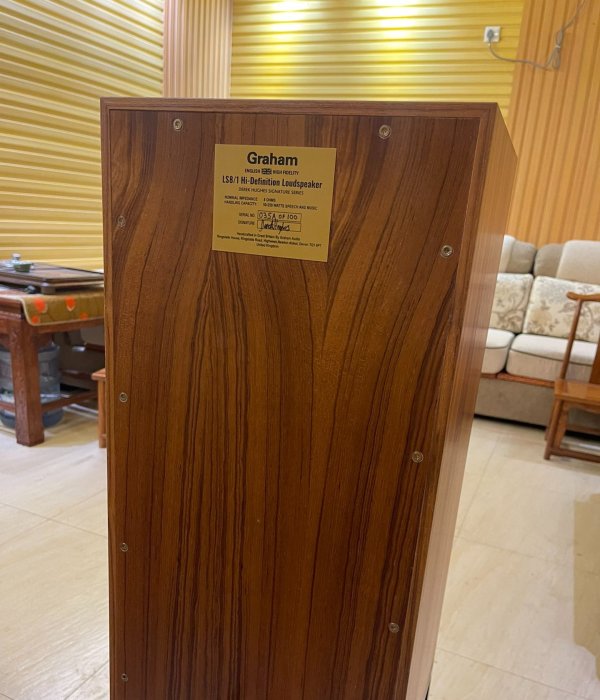Continued…Back to Benchmark AHB2 Amps
For the first time in the history of my audio hobby, I have purchased an amplifier for the second time. A few years ago, in my current listening room, I used a pair of Benchmark AHB2 solid state amps, bridged for mono operation with first my Harbeth M40.2 speakers and then my Gradient 1.4 speakers.
I sold that pair of Benchmark AHB2 amplifiers when I moved to active speakers, the Dutch & Dutch 8c, and later did not need separate amps with my Sanders 10e speakers since the speakers came with one Sanders Magtech amp and I logically purchased another to fill out the biamplified amplification needs of the 10e speakers. I sold both the Sanders amps as part of the sale of the Sanders speakers.
My recent experience with the 750-watt-per-monoblock Audio by Van Alstine AVM M750 amps showed me that I'm a power snob. While the smaller Van Alstine AVM M225 (225 watts per monoblock) sounded great in isolation with my Graham LS8/1 Signature Edition speakers, having heard the more powerful M750 made audible for the first time with these speakers the sense of unlimited power reserves which comes with yet more power on tap. However, while these amps sounded yet better than their smaller siblings, in my system they made way too much noise through the speakers--mostly hum--to be tolerated long term. Thus, I returned the M750s for a refund. As jonstine's comments above and elsewhere on WBF suggest, this noise problem with the M750s may be just a peculiarity of my set up.
Very few amps are truly silent in terms of quiescent hum and noise, in my experience. Usually, with no music playing, if I put my ear an inch or two from the drivers I can hear some noise. I forgive such noise as long as it is inaudible from the listening position, which, in my case is some 55 inches from the drivers.
Thus, my goal in replacing the Van Alstine DVA 750 amps was to acquire amps which provided a similar "endless power" sensation, while still being silent, both in terms of audible chassis hum and audible hum, hiss, or other noise through the speakers.
I know that the powerful Sanders Magtech amps usually are not silent enough. When I once used them with my Harbeth M40.1 speakers in another room of my house, I could hear hiss from several feet in front of the speakers. However, they work in a noise-free manner as part of the Sanders 10e system where they are combined with the dbx VENU360 Loudspeaker Management System. That unit can very effectively act as an input gain control for the power amps, providing, as it does, analog domain controls for both input gain and output voltage. Thus, the dbx can easily lower the effective gain of the Sanders amps so that hiss normally audible through the speakers is silenced. Part of proper gain structuring of a professional audio system is using high gain sources, together with a gain control/volume pot or pad at the amplifier input to allow the gain of the amps to be turned down to just a few dB. This lowers the noise and increases the signal to distortion and noise audio throughput of the system. The Sanders system is unusual among consumer audio systems in allowing for this sort of gain structuring.
The Benchmark Media company, having a foot in both the pro audio and consumer audio camps, provides a gain control switch on its AHB2 amps. In its lowest gain position the AHB2 amps have the truly low gain which ensures compatibility with the high source voltages used in pro-audio system. At this setting the amps require 9.8 volts input for rated output power. While my Lumin X1's rated output is only 6 volts, I know from my prior experience with this combination that the low gain setting goes loud enough with all source material in my room, as well as sounding best and providing the absolute least quiescent noise from the speakers. See my comments on this arrangement here. The Benchmark amps are extraordinarily quiet with any setting of the input gain switch. I hear no transformer hum from the amp chasses with my ear closer than inch from each chassis. And in their low gain setting, I hear absolutely no hum, hiss, or other noise from any of the speaker drivers even with my ear on axis with any of the speaker drivers and within an inch of the speaker grill cloths. This applies for any setting of the Lumin X1's Leedh-processed digital volume control.
My sonic evaluation of the Benchmark AHB2 amps is unchanged since I last used them. If anything, system improvements in the interim have only further revealed their level of sonic refinement in terms of perceived lack of background noise, clarity, lack of distortion, immense sense of power reserves, lack of coloration, three-dimensionality, envelopment, etc. See my 2018 discussion of the AHB2 sonics here.
In the years since its introduction, some, while acknowledging its matchless specs in terms of low noise and distortion combined with remarkable power output given its small and light form factor, have criticized the Benchmark AHB2's sonics by saying it is lacking in macro dynamic swings. I hear this, but I hear it differently and hear it as a plus for the Benchmark. The Benchmarks lack the overblown-sounding midbass of some other amps which can provide a sense of greater dynamic power. It also lacks the ultimate degree of "splash" on large transients which some interpret as a dynamic limitation. I think this "splash" is actually caused by a blast of slightly distorted sound in the higher frequencies. The Benchmark is ever precise, controlled, and clean, clean, clean, which amounts to "beautiful" sound in my book. Likewise, the Benchmark midbass is fully ample and certainly not lean in any way, just more controlled and defined/less distorted. This "uncovers" the Benchmark's lower bass, revealing more detail, definition, and power in the bottom two octaves.
In terms of size and weight, as well as cool running, the Benchmark AHB2 is roughly equivalent to the Audio by Van Alstine DVA M225. The form factor is a bit different, that's all. The AVA is narrow and deep. The Benchmark is wider and less deep. They are both easy to carry and fit well within my "downsized" system form factor goals. However, the Benchmark AHB2s, used in bridged mono, give that "limitless" power impression, whereas the AVA does not. And while the AVA is quiet enough running, the Benchmarks have noticeably more silent backgrounds. The AHB2 are, for all practical purpose, absolutely silent runners, totally concealing the vast power on tap.
While I understand the need for attenuation is system specific, and not necessarily a requirement for everyone, they have made a huge impact with what’s being sent from the Lampi to the amps.
The SR Purple fuses are specific to the M750s however, and as long as you orient them the correct way (in my case both fuses have the “S” in SR closest to the fuse knob or exterior of the chassis) they make a difference. I’ve got the SR Master fuse in the Lampi, but not sure that I want to buy 2 of those for the M750s. I suspect they would be better, but that’s a huge price jump for 2 of them.
Regardless, with the addition of the SR Purples and the Rockwell attenuators, at 200 hrs the M750s are singing better than ever, and I am incredibly pleased with them. What a hobby!




